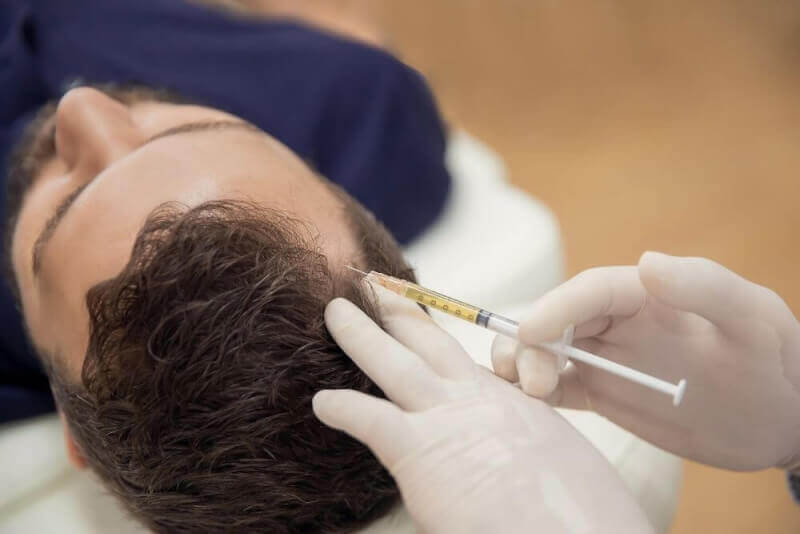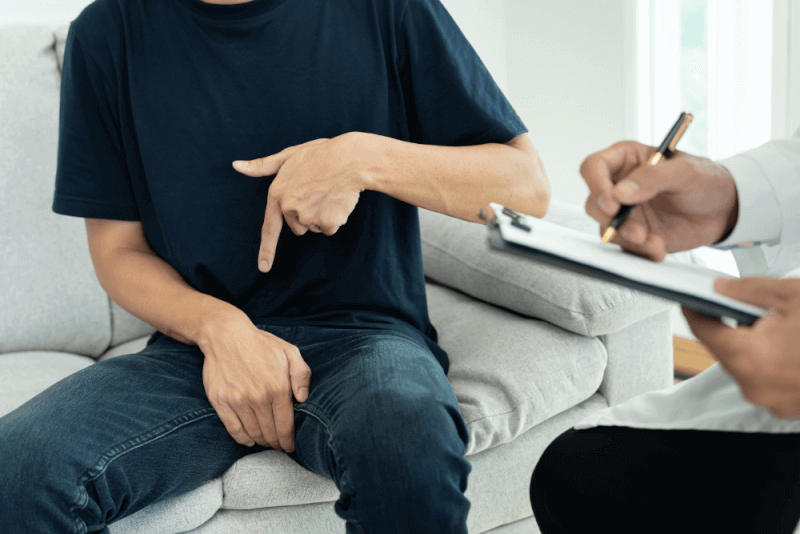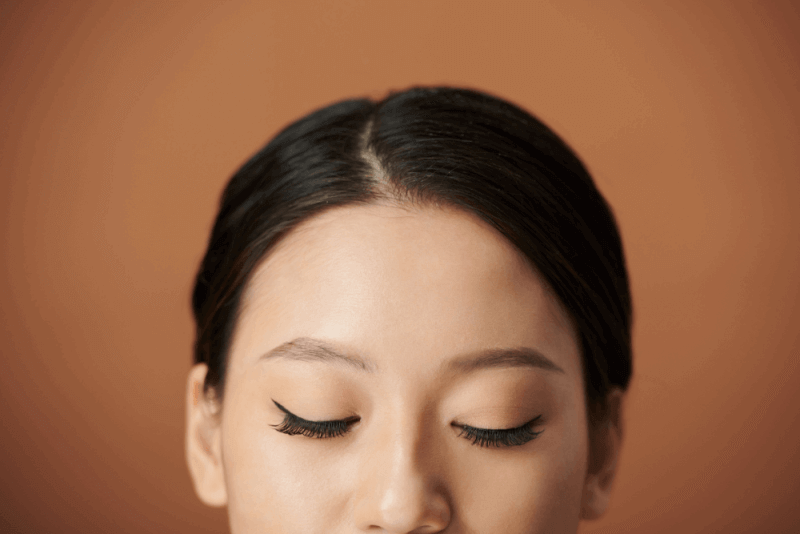What is PRP hair treatment?
PRP, which is one of the auxiliary treatments of many different health problems, is the re-injection of the plasma obtained from the person's own blood into the problem area. The restorative power of the plasma obtained from the person's own blood with a special device is extremely high. In this way, it activates the cells in areas where cell regeneration slows down and supports healing.
PRP, which consists of the initials of Platelet Rich Plasma, is a method that can also be applied to the scalp. PRP application to the scalp strengthens the hair follicles in a short period of time, increasing the quality of the hair strands and thickening them. It is a method preferred by people with hair loss or weak hair in terms of repairing hair follicles.
Since PRP treatment uses the person's own blood as the material, there is no risk of any infectious disease or allergy. It also allows hair follicles to heal in a short time, allowing people to regain their old healthy hair.
How is PRP hair treatment applied?
PRP hair treatment is a treatment that is completed in a few simple steps. However, it is recommended to be applied in several sessions for periods ranging from 2 to 4 weeks. The steps of PRP hair treatment include the following:
- First, 10-20 ml of blood is taken from the person.
- The blood is placed in a special medical device. This device centrifuges and microfibrates the blood. This breaks down the red blood cells in the blood.
- Platelets and thrombocytes obtained from the previous procedure are ready to be applied to the hair follicle.
- Finally, the plasma obtained with the help of a thin injection needle is injected into the hair follicles.
PRP hair treatment is not a surgical method. For this reason, outpatient application is performed.
Who should apply PRP hair treatment?
PRP hair treatment is generally preferred by people who have various problems with hair and scalp. Specifically, it is a method suitable for people with the following complaints:
- Scalp diseases
- Hair loss
- Having weakened hair strands over time
- Hair that won't grow
- Easily breaking hair
Who is not eligible for PRP hair treatment?
There are patient groups to whom PRP hair treatment, which is one of the most successful options for people who have problems with hair health or hair loss, cannot be applied. These groups are divided into definite contraindications and relative contraindications.
Absolute contraindications
Among the situations where PRP hair treatment is absolutely not applicable are the following.
- Local infection at the site of application
- Patelet dysfunction syndrome
- Sepsis
- Critical thrombocytopenia
- Lack of patient consent
- Hemodynamic instability
Relative contraindications
In some cases, whether PRP hair treatment is applied or not depends on the decision of the patient and the specialist doctor. In these cases, PRP hair treatment is not recommended. These situations include the following:
- Use of NSAIs within 48 hours before the application
- Cancer patients
- Corticosteroid application to the application area within the last month
- Use of blood thinners
- Systematic use of corticosteroids within the last two weeks
- Hemoglobin less than 10 mg/dl
- Cigarette smoking
- Presence of platelet-derived blood disease
- Acute or chronic infections
- Autoimmune diseases
- Those with chronic lung pathology
- Pregnant women
- Breastfeeding women
Hair washing after PRP
After the application of PRP hair treatment, it is necessary to wait 24 hours to wash the hair. Apart from this, there are also the following among the points to be considered.
- The shampoos to be used for washing the hair after the PRP procedure should not be harsh. Natural or baby shampoos can be used for this.
- Hair care products should not be used during the first wash.
- Harsh chemicals, perms and hair coloring should not be used within the first 72 hours after application.
What should be considered after hair PRP treatment?
Since PRP treatment is not a surgical procedure, people can return to their normal lives immediately after the procedure. However, hair washing instructions should be followed after the procedure. Apart from this, there are the following among the points to be considered.
- Alcohol and smoking should not be used within 72 hours after PRP application.
- Sun exposure should be avoided for 72 hours after the procedure.
- It is recommended not to use anti-inflammatory drugs for 5 days after the application.
- Blood thinners should not be used before and after PRP procedures.
What are the benefits of PRP for hair?
In case of application of the PRP method to the hair, the expected results include the following.
- According to studies, the success rate of PRP treatment in men with male pattern hair loss is 71.4%. The success rate in women with male pattern hair loss is 73.4%.
- The epidermal growth factor in the plasma stimulates keratin and fiber production. This promotes cell growth.
- The growth factor in plasma supports the growth of new blood vessels thanks to its transforming properties.
- Vascular endothelial growth factor stimulates the growth of vessels in the existing vascular system.
- Fibroblast growth factor promotes granulation during tissue repair.
- Platelet-derived growth factor increases both collagen and proteoglycan synthesis. On the other hand, macrophages and fibroblasts are attracted to the treated area.
- The action of collagen stimulating factor stimulates macrophage proliferation to promote the growth of healthy tissue and blood cells.
- Interleukins, keratinocytes and macrophages activate fibroblast differentiation. In addition, it supports the repair of damaged tissues while increasing healthy cells.
- Finally, the keratinocyte growth factor present in the plasma ensures that the conditions for skin healing are ripe.
When is PRP done after hair transplantation?
PRP application after hair transplantation is an increasingly common practice. The reason why the application is so preferred is that PRP application increases the success of hair transplantation.
In the PRP procedure, it is extremely important to apply it at the right time as it allows the hair follicles to recover faster. The first PRP application after hair transplantation is performed on the 10th day of hair transplantation. must be done on the day. Subsequent implementations were 1. 3. and 6. must be done in a month. In order for the treatment to be successful, it should be planned in coordination with the hair transplant center in the following months.
Is PRP or mesotherapy a better option for hair?
PRP and mesotherapy methods, which are among the most preferred options for hair problems, are applied to reduce hair loss. For this reason, both methods achieve the same result with different techniques. Therefore, a few differences between them can be taken into account when deciding which method to choose.
In hair mesotherapy applications, a mixture of vitamins and minerals is injected into the scalp. In this way, hair follicles are directly nourished. Before the application, blood tests should be performed to determine the missing vitamins and minerals.
PRP is an injection made using growth factors in the blood. For this reason, it is effective not only in hair loss but also in eliminating other hair-related problems.
PRP and mesotherapy methods, which have different process features, can also be applied at the same time. For many people, they are even used as two complementary methods. For this reason, its success increases if it is applied together.
Damages of PRP hair treatment
Since 2009, the PRP method, which has been applied all over the world, has no side effects on patients. Due to the use of the patients own blood, there is no possibility of any disease transmission or allergic reaction.







